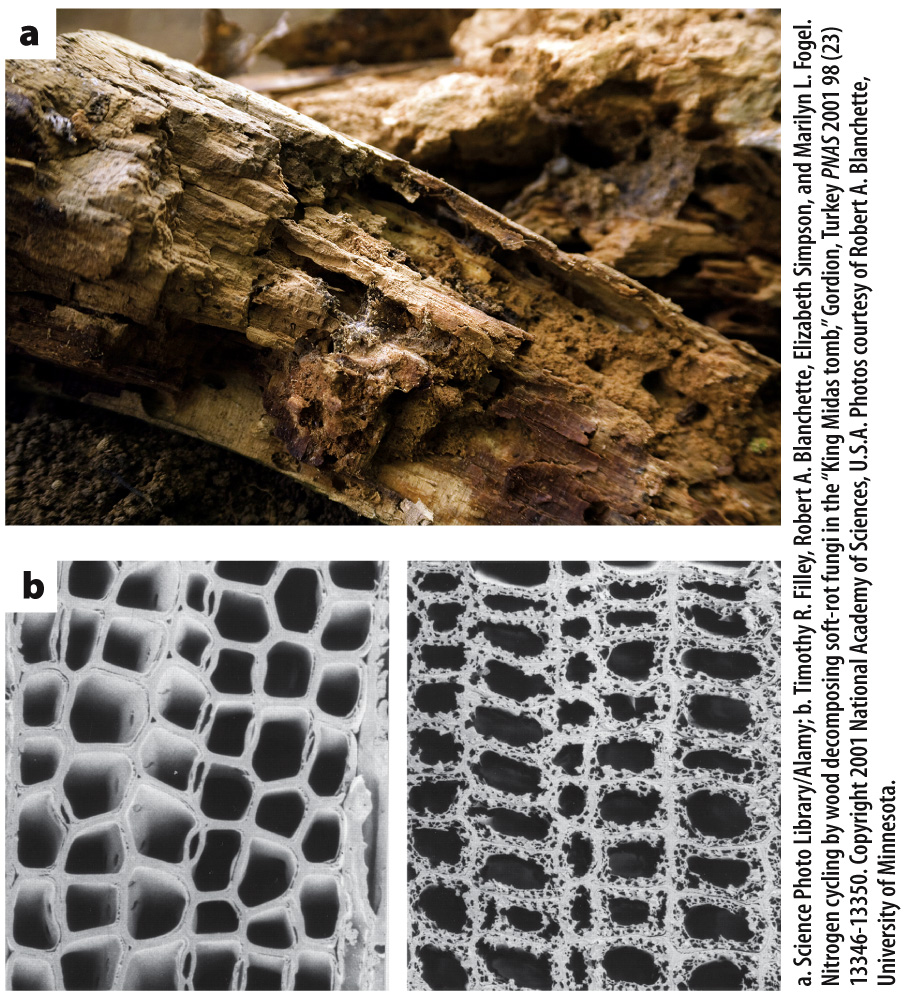Fungi are principal decomposers of plant tissues.
Most fungi use dead organic matter as their source of energy and raw materials. As noted in Chapter 25, on land the organic matter in dead tissues on and within soils far exceeds the amount in the living biomass. Thus, the ground beneath our feet provides tremendous resources for heterotrophic growth. Bacteria and some protists can use this resource, but for the most part it is the fungi that convert dead organic matter back to carbon dioxide and water. This helps to keep the biological carbon cycle in balance (Chapter 25) and returns nutrients to the soil, where they will be available for new plant growth.
A brief consideration shows why fungi have the advantage on a forest floor or in soil. Like fungi, bacteria secrete enzymes that break down organic molecules in their immediate environment, but in the soil bacteria have only a limited capacity to move from place to place. Flagella can propel them a few micrometers through a thin film of water, but when local resources become depleted, bacteria must wait for new food to appear. In contrast, the growing hyphae of fungi can search actively through the soil for new food resources. Furthermore, because fungi can penetrate their food, they are particularly well suited for breaking down the bodies of multicellular organisms, such as tree stems.
Fungi can gain nutrition from dead animal, protozoan, or even bacterial cells, but the most abundant biomolecules on and within soils are cellulose and lignin, the principal components of plant cell walls (Chapter 31). Cellulose is a polymer of the sugar glucose, so it is a particularly rich source of carbon and energy. Cellulose is difficult to degrade because individual cellulose polymers bind tightly to one another. In addition, in wood, cellulose and lignin are closely associated, which makes the cellulose even harder to get at. Lignin is difficult for enzymes to break apart, in part because it lacks a regular chemical structure. A few bacteria are known to degrade lignin, but in nature, fungi account for most of the decomposition of wood (Fig. 34.4).

To break down lignified plant cell walls, fungi require oxygen. However, oxygen concentrations are typically low in water-